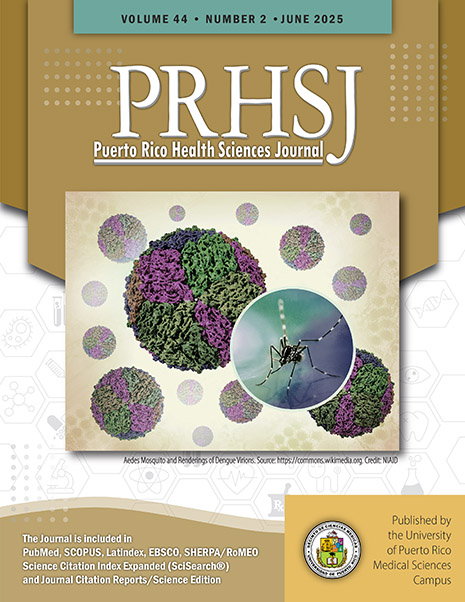Abstract
Objective: Systemic Sclerosis (SSc) is an autoimmune disease with significant morbidity and mortality secondary to pulmonary manifestations. The six-minute walk test (6MWT) has been used in SSc studies to measure respiratory complications, particularly pulmonary hypertension. In this study, we evaluated whether the six-minute walk distance (6MWD), measured during the 6MWT, is associated with clinical SSc symptoms in Puerto Rican patients in a rheumatology clinic. Methods: We prospectively collected 6MWT data for 37 consecutive SSc patients at the University of Puerto Rico every three months for one year between 2013 and 2015. A linear mixed regression model was used to investigate the effects of the SSc clinical features and subtypes on average 6MWD over time. Results: The average baseline distance walked by SSc patients was 365.2 (± 8.1) meters, with no significant differences over time. No statistically significant differences (p>0.05) were found in the sixminute walk distance (6MWD) at different time intervals for SSc subtypes. Two clinical features, palpitations and lung crackles, were associated with a significantly shorter 6MWD(p<0.05). Conclusion: Our study showed that the 6MWT can be used to evaluate SSc patients. No association was found between 6MWD and most clinical SSc symptoms in our population. Two clinical symptoms, lung crackles and palpitations, were associated with decreased 6MWD.
Authors who publish with this journal agree to the following terms:
a. Authors retain copyright and grant the journal right of first publication with the work simultaneously licensed under a Creative Commons Attribution License that allows others to share the work with an acknowledgement of the work's authorship and initial publication in this journal.
b. Authors are able to enter into separate, additional contractual arrangements for the non-exclusive distribution of the journal's published version of the work (e.g., post it to an institutional repository or publish it in a book), with an acknowledgement of its initial publication in this journal.
c. Authors are permitted and encouraged to post their work online (e.g., in institutional repositories or on their website) prior to and during the submission process, as it can lead to productive exchanges, as well as earlier and greater citation of published work (See The Effect of Open Access).
